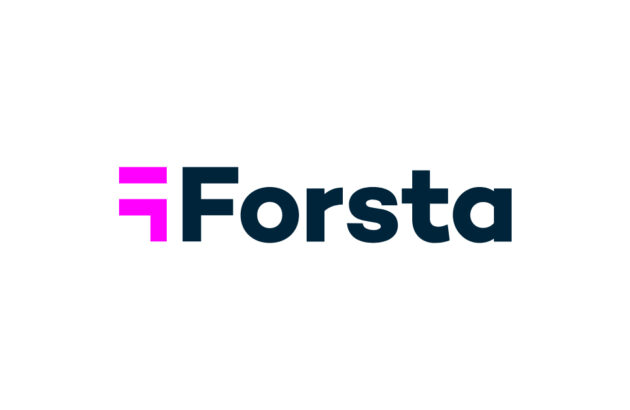What is data visualization and why use it?

Anything that makes complex info easier to understand is okay in our book – and that’s precisely what data visualization does (and why we love it so). If you’ve got data to communicate far and wide – whether that’s to your customers, your team, or your boardroom – you’re going to want to tell your story in a way that people can process it. To understand the human experience, you need to both tell and hear stories from everyone.
In this blog, we’ll talk you through everything you need to know about the wonders of data visualization – from what it is, why it’s important, and how it can bring your data to life, to the different types of data visualization, the pros and cons of data visualization, and the relationship it holds with big data.
You’re in for a treat!
What is data visualization?
Data visualization is the representation of information and data through visual elements – such as maps, graphs, and charts. The graphical context makes data much easier to understand and allows an audience to extract insights and spot trends with minimum confusion. Data visualization is also great for communicating information to a non-techy audience, who may get lost in reams of written data.
Also known as statistical graphics, information graphics, and information visualization, the practice of data visualization is part of the data science process, which holds firm that data must be visualized before any real conclusions can be drawn. For that reason, data visualization is frequently used within organizations to convey key information to stakeholders, and within teams.
It’s also common practice for data scientists when dealing in advanced analytics: translating complex numerical outputs into graphic visualizations makes for far easier reading – allowing results and outputs to be monitored through accurate visualizations. In the context of market research, representing customer feedback and buying trends visually is great for storytelling!
Why is data visualization important?
Put simply, data visualization is important because it increases understanding. Used across industries, sectors and disciplines, visualizations help people to process and interact with information, irrespective of their experience or expertise.
No matter what your business, data will form an essential part of it: from reporting on company performance, to monitoring the success of a marketing campaign, every organization is constantly dealing in data. But beyond the data lies something even more important: people; people who need to be able to interpret the story you’re telling them.
Data visualizations bring those stories to life – making them one of the most valuable business tools there is. They make the information human, by showing the stories behind the statistics, and the patterns behind the person.
They can help you to make informed decisions, easily spot outliers in amongst your trends, effortlessly showcase key statistics, and visually pave a clear way when you’re not sure which path to follow. Displaying data visually can also serve as an effective way to distribute information, meaning that insights can be easily shared, while making it possible to act on those insights quickly because there’s a clear path ahead.
In short, data visualizations serve to marry the creative with the technical; the storytelling with the analytic – and it’s a match made in heaven.
Why use data visualization to present your data? 8 reasons why
Now that we know why data visualization is so important, let’s look at why you should use it to present your all-important info – in whatever context that might be.
- It’s universal: graphic representation of your data acts as a fast, efficient, and wonderfully universal way to convey information.
- It’s insightful: being able to view all your data as a visual affords you a great many insights, as it’s possible to instantly spot where improvements need to be made, what’s performing particularly well, or how your customers are behaving.
- It’s memorable: one of the greatest things about presenting information through data visualizations is that it becomes more memorable, more distinctive, and more note worthy.
- It’s clear: data visualizations help your audience to absorb the info you’re relaying to them far more quickly than they would through more traditional, laborious methods (if they absorbed it at all).
- It’s informative: if you want to make well-informed decisions, and you want to make them fast, presenting your data visually is the way forward.
- It’s democratic: using data visualizations can help to negate the need for data scientists, as the data becomes far more accessible this way.
- It’s captivating: grabbing and maintaining the attention of your audience is no mean feat when you’re dealing in data, but visualizations make it possible as people will be able to follow the story you’re telling.
- It’s instructive: by helping you to predict sales, understand how to market products, and monitor consumer behaviour, data visualization can lead you to the most logical next steps for your organization.
Types of data visualization
We’ve come quite a long way since the days of pie charts and bar graphs. Effective though they undoubtedly were, data visualization has advanced somewhat. With a whole plethora of visualization methods out there to pick from, it’s important to make sure you’re choosing the right medium through which to share your data; otherwise, its beauty is lost.
So, what options are out there?
- Line charts: Basic. Common. Effective. Line charts are great for showing trends, and how variables change over time.
- Area charts: A cousin of the line chart, area charts can either be used to show multiple variables in a time series, or a sequence of data from consecutive and equally spaced times.
- Treemaps: If you’re after something that lets you compare different parts of one whole, with multiple categories at play, treemaps are where it’s at.
- Scatter plots: Need to show the relationship between two variables? The X and Y axis of a scatter plot shows your data points through dots!
- Population pyramids: If you’re trying to visually represent the distribution of a population, population pyramids use a stacked bar graph to tell a story.
- Tables: Well, we don’t need to say much here, do we? If you need a simple way to lay out your figures, look no further than the rows and columns of the good old table.
- Infographics: Whether a chart or a diagram, infographics combine visuals and words that represent data. Great for using on your socials!
- Dashboards: Ah, the analyst’s friend. Dashboards are a great way to display collections of data and visualizations in one place – helping you to present and analyse data with ease.
Data visualization and big data
Big data is a big deal. No two ways about it.
With the dawning of big data, organizations needed ways of dealing with the masses of data they were accumulating daily – and visualization tools were the perfect fit.
Making sense of data is critical for telling a story and getting other people to understand that story. Data visualization comes into its own where big data is concerned, because it effortlessly cuts through the noise and curates complex data into something that’s easily accessible – spotting trends and highlighting outliers as it goes.
Data visualization is also extremely valuable for its ability to speed up the interpretation process. With big data culminating in huge swathes of information that would ordinarily take an age to understand and explain, visualizations provide a graphic representation that makes the whole thing simple. And the best part? Visualizations give you a straightforward, savvy way to present key info to your stakeholders (in a way they’ll understand).
Advantages of data visualization
Right then, aside from easy stakeholder sharing, simplified interpretation, and speedy analysis, what advantages are there to data visualization?
You probably work with a lot of very clever people. So why do you need to make things easy for them? Can’t you just present info the old-fashioned way and trust their noggins to fathom it out? Well, you could – but there’s a whole science behind why data visualizations work so well.
As innately visual creatures, us humans are drawn to art. We like shapes and colors, patterns, and pictures. And we find it much easier to spot yellow from red than we do to spy differences in numbered sequences.
Data visualization is particularly effective because it commands attention and manages to keep it. When we’re presented with charts and graphs, it’s easy to spot patterns and trends; it also makes it much easier to tell a story, which helps us to internalize what we’re seeing. Viewing data in a spreadsheet just doesn’t have the same appeal.
When it comes to market research, data visualizations are perfect for helping you to interpret every rich piece of information – from customer feedback to buying trends. And because it’s so easy to share these graphics, you can bring everyone up to speed in no time at all – leading to uncapped opportunities for improvement!
But are there any downsides?
Disadvantages of data visualization
Data visualization has a lot going for it, but there are certain drawbacks you need to consider before setting your cap at this way of working.
We’ve already given you examples of some of the different types of data visualization, but what you might not realize is that by using the wrong style, you open data up to misinterpretation or misrepresentation. Poor design can also make visualizations confusing, while visualizations carrying multiple datapoints can lead to inaccurate interpretation.
It’s also important to keep in mind that data can sometimes be biased or inaccurate, and that correlation doesn’t necessary equate to causation. Not only that, but when transferring information to graphical form, key messages risk being lost in translation.
Aside from risk of error, there’s also the effort and expense to consider. If you really want to use data visualizations to full effect, you’ll need to hire a visualization specialist (that, or enlist the help of an expert data partner). A data specialist will need to be able to optimize data by selecting the right visualization method for the data in question.
You might also need the involvement of your IT department if you’re dealing in Big Data visualization, as this often requires advanced storage and effective (and powerful) hardware.
Examples of data visualization in use
It’s all well and good talking about data visualization, but nothing quite brings the message home like seeing it in action (reinforcing the point that we’re all about the visual!) So, let’s look at some recent examples of data visualization in use today.
Some super clever scientists have only gone and figured out why different birds lay differently shaped eggs. You could say they’re ‘cracked it’ (we’ll be here all week). The study involved data from nearly 50,000 bird eggs, collected over the course of the past 100 years, and mapped egg dimensions to an impressive 1,400 species! The chart is a beautiful illustration of the relationship between asymmetry and ellipticity.
Ever wondered how much protein your average American gets through, or where it comes from? You have? Well wonder no more! This visualization utilises data from the USDA on food availability, to show how Americans eat nationally. The chart focuses on how many pounds of key sources of protein have been eaten between 1970 and 2019.
How the pandemic increased poverty
The Covid-19 pandemic led to a great many hardships for a great many people – including a rise in poverty amongst the world’s poorest countries. In this data visualization, color and placement are used to tell a sombre story, to compelling effect. The colored bars demonstrate the rising poverty rates for countries following the pandemic.
How can Forsta help?
We’re pretty big on data visualizations here at Forsta. And it’s because we frequently bring our customers’ data to life in the form of unmissable infographic storytelling.
Forsta’s infographic storytelling takes your boring old black and white data and transforms it into vibrant technicolor (or whatever’s most on-brand for you). We’ll help you to create infographics that explain, inspire, and convince people to act – all while helping you to map out steps in a customer journey, spotlight the scale of an issue, or reveal trends trapped in your data.
Telling visual stories is the best way to inject audience-inspiring pizazz into your information, and we’ve got all the tools you need to get there. Our Infographic Storytelling is incredibly fast (boasting drag-and-drop tools, design libraries, and no-snags export) – and you can use it on its own, or incorporate it into PowerPoints, PDFs, and online dashboards.
Arrange a free demo to see what it’s all about!
Getting to grips with the future of data
Data visualization is undoubtedly here to stay. With the growing popularity of Big Data, we’re not sure where organizations would be without it! But remember – it’s not without its drawbacks. You need to use the right tools at the right times, for the right data. And if you’re not sure how, it really is time to enlist an expert.
Related stories
Research HX
Many feedback programs measure Net Promoter Score movements, but few can reveal the “why” of customer behavior. Forsta’s HX Benchmarks puts performance in context so you can understand what great experiences look like for your customers. Learn more about the human-centered intelligence you need to outperform the market.

AI and the new era of customer experience: Insights for 2025 and beyond
AI and the new era of customer experience: Insights for 2025 and beyond Webinar synopsis: In today’s fast-paced digital landscape, customer experience (CX) is the ultimate differentiator—and AI is rewriting the playbook for how businesses connect with their customers. Tune in to an engaging session that blends cutting-edge thought leadership with actionable strategies to elevate […]

Integration: the new frontier of insights for research HX
Integration: the new frontier of insights for research HX Webinar synopsis: Discover the faster, smarter and more accurate way to research with Research HX. Gone are the days of sequential processes skipping between platforms. Parallel workflows, integrated steps and AI enhancements to the tools you use daily. Related resources

Learn more about our industry leading platform
FORSTA NEWSLETTER
Get industry insights that matter,
delivered direct to your inbox
We collect this information to send you free content, offers, and product updates. Visit our recently updated privacy policy for details on how we protect and manage your submitted data.